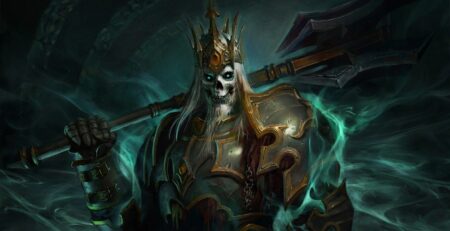Most video games offer players a power fantasy. Whether it is tearing through hordes of demons with your bare hands, expertly jumping through an obstacle course, or having an entire kingdom at your command, they ultimately reward players by making them feel accomplished and capable. But not every game follows that path to success. Some aim to challenge their players with emotional challenges as well as the usual mechanical ones. When successful, these can deliver an experience that other mediums can’t, thanks to player interaction and involvement. And when a title manages to do so, it becomes exceptional. Frostpunk 2 is one such game.
Developed and published by 11 bit studios, Frostpunk 2 is a city-builder set in a frozen post-apocalyptic wasteland. The world has frozen over with what remains of its resources, which need to be carved out of the ice to be accessed. Whiteout blizzards sweep over the land and threaten to wipe out entire settlements of survivors in a frozen vice grip. And every decision has the potential to spell disaster or bring salvation. Every mission is a fight for survival and puts players at the center of an incredibly delicate balancing act that requires tough decisions to make it through alive.
The foundation of survival in Frostpunk 2 takes the form of resource management. Players command their workforce to clear the ice around resources so they can expand the city and harvest them. There are numerous resources to manage, including food, oil, materials, goods, and prefabs. Those resources are then used to continue expanding the city while keeping citizens healthy, happy, and, perhaps most importantly, warm. Doing so requires managing a dense web of interconnected needs and requirements throughout the city. There is always a need for more than what you can get, forcing players to adjust priorities as they go fluidly.
In addition to managing resources in Frostpunk 2, players have to manage the people who live in their city. Citizens are grouped into different factions, each with priorities and opinions on how the city should be run, inevitably leading to tensions between them. Players can make them happy or angry depending on what upgrades they research, the laws they pass, and how certain events are handled.

This breathes a lot of life into the digital city players are the stewards of. There is a real sense of humanity, and it is easy to find oneself feeling real kinship or frustration with some of Frostpunk 2‘s more ardent factions. It feels frustrating to tackle a problem differently than you want to to keep one of the factions from rebelling against you. Still, it is really impressive that a video game can achieve that emotional result as organically as Frostpunk 2 does.
Players can also venture far outside their city into the wastes to search for other settlements or build their colonies to secure resources. By exploring regions and resolving events within them, players can put their city in the wider context of the entire post-apocalyptic world and not just their corner of it.
These events are often morally challenging, like those that occasionally pop up in your city. They push players to consider how much freedom is worth giving up for security, how much outsiders should be trusted at the risk of one’s people, and plenty more dilemmas explored throughout the post-apocalyptic genre. Taking the events outside of the city at the center of gameplay, however, allows them to feature outsiders and to push players to view how their people, and through that themselves, really treat the rest of the world.
Humanity and the people struggling to survive against truly staggering odds are central to the game’s systems. Every action is framed not by how it will impact the city but by how it will affect its people. Successfully obtain a new source of fuel to keep the generators running, and a text box will pop up, offering a peak into the relief felt by a small child who feels warm for the first time.

Fail to stockpile enough food for a coming blizzard and be confronted by the city elders offering to walk off into the waste to prevent becoming a burden on those who can work. It frames the difficulty of its gameplay mechanics with an emotional lens that can be devastating but is emotionally rewarding to experience as well.
What is most impressive about Frostpunk 2 is how well it blends its emotional narratives with its gameplay mechanics. It challenges the player on an emotional and moral level while also challenging them to grapple with some of the most intricately linked and well-refined gameplay the strategy genre has seen in years. The world of Frostpunk 2 is one void of large-scale happy endings.
Humanity most likely won’t end up bringing the apocalypse to a close or returning to how life once was. But it uses that to highlight the beauty of the more minor victories—the achievement of surviving through the blizzard. The satisfaction of getting a critical law passed that you’re sure will help people. It isn’t a traditional power fantasy, but it enables you to see just how much power there is in getting through today, tomorrow, and the next day.
Frostpunk 2 releases on September 20 for PC, PlayStation 5, and Xbox Series X/S.
Frostpunk 2
-
Rating - 9/109/10
TL;DR
What is most impressive about Frostpunk 2 is how well it blends its emotional narratives with its gameplay mechanics. It challenges the player on an emotional and moral level while also challenging them to grapple with some of the most intricately linked and well-refined gameplay the strategy genre has seen in years.





